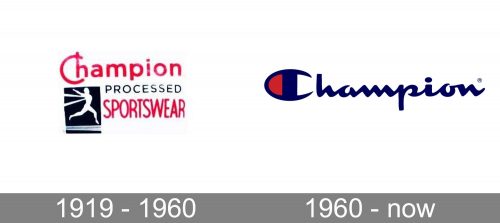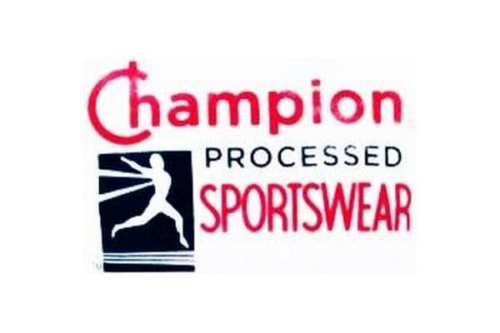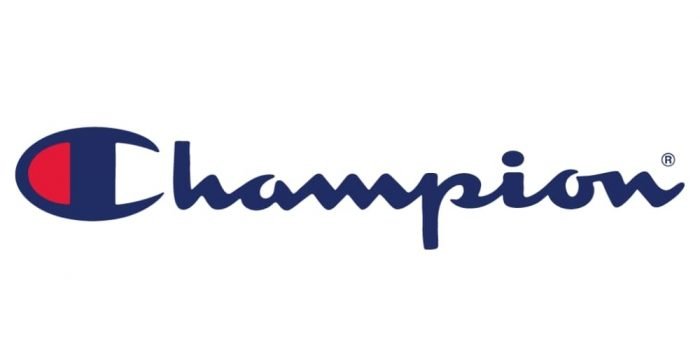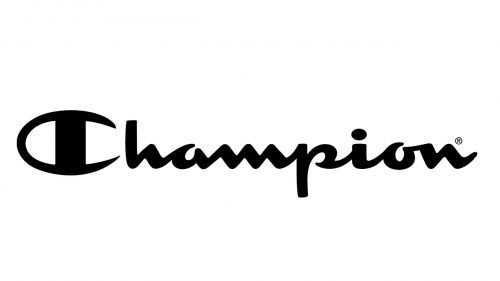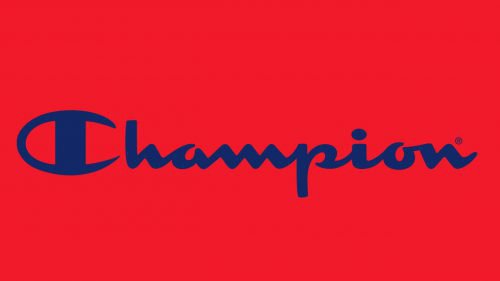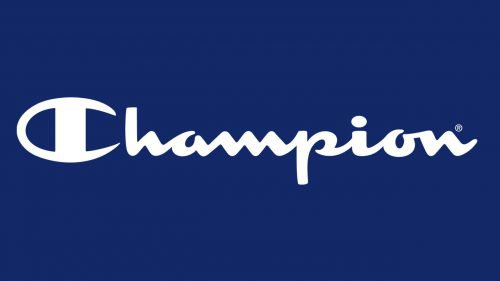The Champion logo exists in two basic versions. In addition to the primary emblem featuring the full name of the brand, there’s also a distinctive “C” icon used as a standalone logo.
Meaning and history
The brand itself describes its specialization as “athleisure.” Taking into consideration that the company’s history started over a century ago, it’s only natural that it has a lot to be proud of. It pioneered the technology known as the Reverse Weave and played a significant role in developing and introducing the hoodie and sweatshirt to the world of sports fashion.
The company now known under the name of Champion was founded in Rochester, NY, in 1919 by the Feinbloom brothers. Its original name was Knickerbocker Knitting Company. One of the first successful contracts was the one signed with the Michigan Wolverines – the brand was to provide kits for the teams.
In about 15 years, the name Champion Knitting Mills Inc. was adopted. At the time, the company’s range started to include sweatshirts. It was then that the clothes designed and manufactured by the brand began to be used by students of the United States Military Academy as part of their uniform.
Another big contract was signed in the early 1990s – the brand was to provide uniforms for all the NBA teams throughout about a decade. Moreover, it manufactured kits for several NFL teams during the 1980s and 1990s. Champion has also been known for its collaboration with quite a few leading colleges. In 1992, the company provided the US Olympic basketball team with the uniforms for the Summer Olympics.
The Champion logo can be seen on uniforms of different well-known teams and athletes, from Premier League to Wigan Athletic Football Club (England). It also collaborates with major teams from Wales (the country’s national football team), Greece (the country’s basketball team), and Italy (professional basketball club MIA Cantù).
While the brand doesn’t own an extensive network of stores, its products can be purchased through many major sportswear fashion retail companies. Also, more recently, Champion has been selling through smaller sportswear stores providing lower prices.
1919 — 1960
On some of the brand’s earliest products, a large block “C” can be seen in various typefaces. It appears, though, this wasn’t the company’s official emblem. The first known official logotype was used in the 1940s and 1950s. The emblem depicting a running man and finish line could be seen on the neck labels of the products.
1960 — Today
Over time, the original Champion logo was modified. Now, the name “Champion Knitwear Company” was featured on the label.
A new era in the history of the emblem started in the 1970s and lasted until the late 1980s. During this period, the insignia went through a series of alterations until it began to look very much like it does today, with the company name in red and blue on the white background. Initially, the lettering was given in a simple sans serif typeface. Later, the familiar cursive insignia with the distinctive “C” was developed.
Interestingly enough, while you can see vintage items from the 1950s where the “C” has the characteristic vertical bar, it was later removed. So, in athletic goods catalogs of 1953 and 1954, for instance, the “C” doesn’t have the bar, while in the 1957 catalog the company name is given in a plain type. These facts probably suggest that although the wordmark was developed quite a long time ago, it didn’t reach the status of the brand’s official logo during the first decades of its existence.
History of the “C” emblem
While it’s hardly possible to name the exact day, month or even year when the iconic “C” made its debut, we can at least identify the decade. Sweatshirts with the “C” on their left sleeves started to appear in the 1950s. Both the letter and the thick vertical bar in its middle were dark blue, while the space inside was filled with dark red. The logo typically had a white outline created by the thread used to affix it.
The positioning was very specific – the emblem could be seen on the left sleeve of the shirt. We are safe to claim that the fact that the “C” became one of the most recognizable logos in the industry was due not only to the shape of the logo, but also to the way it was positioned.
Font
Although the lettering “hampion” may remind some of the existing fonts (Monoment, for instance), it appears to be a custom artwork.
Colors
The palette is based on the combination of dark blue, dark red, and white. Typically, almost all of the Champion logo is given in dark blue on the white background, while red is preserved only for a tiny patch on the “C.” Other versions are also possible, especially when the emblem is placed on clothes of various colors. For instance, sometimes the blue isn’t used at all: the lettering is white, except for the red patch on the “C.”
What does the Champion logo mean?
The main meaningful element of the Champion brand logo is its color palette, composed of the most patriotic American tricolor — blue, red, and white. This stands for the commitment of the brand to its country and national athletes, as Champion got famous as the company, which started from the production of sports uniforms for American teams.
Is Champion a women’s brand?
Champion is a famous sportswear and footwear brand, which produces goods for the whole family — men, women, and kids. Most of the brand’s products, such as hoodies, t-shirts, and sweatpants are all unisex.
Is Champion owned by Nike?
Champion is an American brand, which was founded by the Feinbloom brothers in 1919. In 1989 the brand was acquired by Sara Lee Corporation, and today is owned by Hanesbrands. So Champion has nothing to do with Nike.
Why did the Feinbloom brothers make Champion?
The Champion brand is a child of the Feinbloom brothers, who founded the Knickerbocker Knitting Company in 1919 as were not happy with the quality of sportswear, available on the market at that time.



